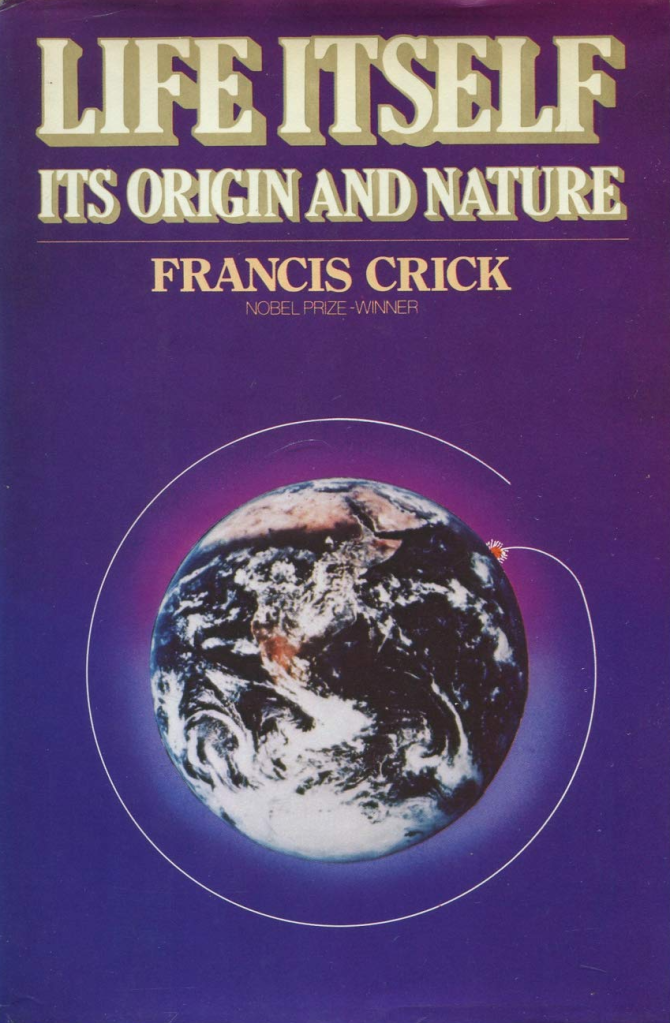4 1/2 years ago I set out on a quest – a quest to determine the origins of religion. Obviously, it was a most ambitious undertaking, and when I started, I felt that, realistically, I could hardly hope to ever succeed. Yet today, I can say: I’ve reached my goal, I found the answer (mind: found, not discovered). Simplified: I am now fully convinced that the origin of religion, and, possibly, even the origin of advanced human culture, is natural hallucinogens. Of the kind that are still, to this day, being consumed by so-called primitive peoples around the globe, with Ayahuasca as probably the most famous one. But also of the kind that we ourselves produce in our brains (mainly DMT). And I’m furthermore fairly convinced that what we access via the usage of natural hallucinogens is information stored in our DNA. I’m referring to the tiny 97% part of our DNA (and hence of ourselves) which are just ‘junk’ according to orthodox science. In other words: I’ve come to realise, like so many before me, that the key to the ‘Gods’ lies in ourselves, that those gods are in every single living being, in every living cell on this planet. But, also, that, if people talk of the love of God, they essentially feel the love that’s stored in themselves. But how and by whom? I myself still do not believe in any God(s) – bear with me.
In the beginning, there was a book. Somewhat absurdly Thilo Sarrazin’s well known and fiercely criticised ‘Deutschland schafft sich ab’. Therein, I found Koran quotes that strikingly contradicted the theologians‘ depictions of Islam in the German media. I wanted to know the truth behind it – who was right: the scholars or Sarrazin? –, so I read the Koran. First, to call this book, its ideologies, peaceful, is either a deception or an admission of dyslexia. But more importantly, in the Koran I came across concepts that reminded me of similar ideas from other religious/mythical/spiritual stories, from cultures widely separated in time and space. So, for comparison’s sake, I started reading the other major ‘religious texts’ from cultures around the globe, digging ever deeper into the past and into the origins of it all.
Soon, I found that there actually exists a site that has already overthrown the orthodox beliefs of History without, by any means, being adequately acknowledged by it, namely Göbekli Tepe in South-Eastern Anatolia – a gigantic megalithic site that was radiocarbon dated to an age of at least 11.500 years! When I learned about its existence, this site simply blew my mind. In an instant it changed my whole conception of prehistory, and I immediately realised that it strictly – and quickly! – demands a drastic revision of human history, a whole new theory, and that it’s also one of the most important (currently known) keys to that theory. It’s a shame Göbekli Tepe is still so little known (and so little excavated, for that matter). I felt betrayed by mainstream history and by the so time-consuming educational system I went through for never telling me about it.
I had to keep going.
In the process, I realised that there is overwhelming evidence, nay proof!, for at least one globalised, highly advanced human civilisation prior to our own, prior to the Egyptian, Sumerian and Indus Valley cultures, prior to the end of the so-called Ice Age (which was, in fact, by no means and no time global during the period of known existence of human culture). I realised that there had been a civilisation which was the origin of most of our oldest myths and, due to an undisrupted reproduction and thereby successive alternation of the material throughout known human history, of the very beliefs that are held by people today. I realised that this civilisation was washed away by the great floods which so many ancient accounts all around the globe speak of. I realised that, quite recently, we found scientific proof for these floods, that they were caused by the so-called Late Younger Dryas events, monumentally cataclysmic meteor impacts in our very recent past as a species.
And I also learned that the date Platon gives in his account for the destruction of his highly civilised land of ‘Atlantis’ exactly matches the dating for the Late Younger Dryas events.
I realised, quite late, that ‘my’ civilisation must have been on a technological level comparable or even superior to our own today. I realised that they had understood the principles of at least electricity, magnetism, electromagnetism, gravity, sound and seismic energy apparently better than we do. I realised that they used heavy tools, leaving thousands of clearly visible marks that can still be seen – and analysed! – today. Tools which require an energy source, marks which cannot be produced by manual tools (despite all (often massively funded) efforts to prove the contrary).
I realised that the Great Pyramid of Giza, ancient Rostau, is by far the most outstanding building ever created by human beings, as far as we can tell, a preserver of scientific knowledge which took us far too long to decode. And who knows what we still can’t see. I realised that the Great Pyramid is older, so much older than orthodox History wants us to believe. That this indescribably sophisticated building was, of course, not erected by primitive people using primitive tools to serve the primitive purpose of accommodating some dead body. I found that, indeed, there’s no proof for just a single mummy ever having been found in any Egyptian pyramid. That the whole tomb theory, which is being hammered into children’s brains and broadcasted in the form of shiny documentaries around the world, is nothing more than fully unsubstantiated speculative nonsense, born in the most unimaginative reaches of intellectual dullness.
I realised that so many outstanding human creations on this planet are so much older and so much more sophisticated and so much more extraordinary, simply mind-blowing in their magnitude, their incredible and still, for us, unachievable precision, their incorporated deep knowledge of this planet, the universe and physics. It’s all there, our fascinating heritage as a species, for everybody to behold who digs under the corrupt cover layer of a hundred years of scientific nonsense which produced a theory of prehistory that is an utter insult to the very principles of Western Science. Even John Snow knows more.
I was very surprised to learn that we have loads of concrete archaeological proof for high civilisations in North America prior to the arrival of the Europeans. I was then not surprised to learn that their vast number of monuments is continuously being hidden from public eye by simply building over them. Imagine a modern mall intentionally built on an unexplained huge ancient monument from a lost civilisation – just go to the US.
As a person, although I always cared a lot about nature, our planet, and, perhaps even more, for humankind, I soon began to realise that I was still being arrogant towards nature, and towards so-called primitive cultures, towards life itself, that I was wrong with so many preconceptions I took for undeniable truths. And that we are wrong, we the West. In what we think to be true, in what we think to be right, and especially in what we do day in and day out, to ourselves and to others.
By relying on a purely rationalistic world order, we miss half the picture, half of reality. We built and keep on building easily comprehendible anthropomorph concepts that can easily be imagined and portrayed to explain the most complex and abstract concepts and phenomena, culminating in the barbaric abomination of former concepts by introducing a narcissistic old white man with infinite super powers which defy any logic of the physical universe we are in and who’s contradictory ethics and actions are sheer ridiculous. Today’s monotheistic religions are about the most simplified retellings of previous, much more complex and so much more logical stories and concepts. Whoever believes that stuff, believes people who simply didn’t get it, they didn’t get the stories they’d been told, and today Western science, with it Western education, and, as a result, Western people do not get them. That in itself is a horrific tragedy.
The overwhelming simplicity I conceived of the dominating religious concepts around me was the one thing that, for decades, had kept me from more deeply exploring religion/spiritualism, its origin in human history and the importance of so-called mythical or religious/spiritual ancient texts.
During my research, I bought my dream piece of land on a Scottish Isle, got married and became a dad for the second time. Replicating life out of my own life has caused deeply human reflexes of incredible joy. The rationalist in me identifies an evolutionary function of, if we break it down, DNA, the self-replicating building genius within us. But this might be one of the unforced occasions in life when the rationalist and the sciences critic in me come together.
I realised that the ancients possessed knowledge of DNA, a structure 120 times narrower than the smallest visible wavelength of light – yes, indeed! It’s incredibly tiny and at the same time incredibly gigantic: If stretched out, the DNA contained in the body of any single human could be wrapped around planet Earth at least five times! I realised that evidence for ancient knowledge of the DNA structure can be found around the globe in human art, leading back to its very beginning: cave paintings. That, hence, the ancients were aware of the origin of life as we know it.
And I realised that DNA is the key to the greatest questions of mankind. It has a catch though: It’s an encoded key, and we are mere beginners in trying to decode its functions. Scientists even had the guts to name 97% of our build-up essentials ‘Junk DNA’. They’re wrong. They’re overlooking a gigantic information storage device, one we can access by raising the level of natural hallucinogens in our bodies – via food, drink or techniques, often religiously ritualised, that involve dancing, singing, meditation, and others.
It’s a common and most harmful pattern in Western science, and its history, to attribute nonsensicality to new discoveries and ideas for the sole reason that very loud contemporary scientists, from the perspective of the scientific knowledge of their time, find themselves unable to grasp these findings. Perspective is always a possible source of error. To present a definite answer for whatever matter one does not understand, is pointless by default, and yet this kind of ‘science’ is the leading, and often only principle, behind many well accepted scientific theories.
Quite early into my research, I realised that an alien interference, as strange as it may seem, is a theory which could explain pretty much everything mysterious about the grand scale of human history. More importantly, it’s the only theory with such a capacity. Scientists do not like universal theories though, they hardly ever pursue them. There also seems to be the opinion among scholars that the alien theory is by default not a scientific matter because it, supposedly, cannot be scientifically validated by hard scientific proof. A strange opinion, quite non-factual. What is there, can be made visible – if only you have the right means. To claim something, which you have no means to prove, does not exist, is pure arrogance. Who chooses not to look, will never see.
Francis Crick, Nobel Prize laureate for co-(re)discovering the DNA double helix structure, calculated that life in its earliest shape – single cells made of DNA – was already indescribably too complex to have possibly originated on Earth by mere chance. That it hence must have been bio-engineered. This is a matter of simple stochastics, of math. Denying math is denying science. It’s disqualifying oneself from scientific competence.
Accepting the artificial nature of DNA as a mathematically proven fact, leaves us with only two possible agents for the engineering task: an alien interference with the planet, terraforming young Earth ‘simply’ by introducing DNA to its surface, or an engineering entity for the whole universe, be that entity called God(s) or whatever.
What matters is that we were created. Not as humans per se, but that life on Earth was created, or, rather, engineered. To my surprise, I found the deepest joy in this knowledge. I finally understood the so mysterious concept of love, and that the famous love of God is the love our alien creators felt for us like we love our children, and that they managed to transfer this love into their biotechnology we call DNA.
Somewhat strangely, I also spent a lot of time looking the other way from ancient history, reading about astrophysics, contemporary astronomy or simply consuming sci-fi, with the great Asimov alone mounting up to 27 novels and short story collections during my period of research. I got myself familiar with sciences like geology, hydrology, climatology, cartography, statics, and even machine engineering. At the same time, I learned, often helped by YouTubers, how to build stuff myself, working, with my own hands, on wood, metal, concrete and stone, using both manual and electric tools. I became a gardener. And I started learning ancient alphabets because I would often wonder about the accuracy of certain passages, or just single words, in translations of ancient texts.
I found pleasure in finding that there’s a rapidly growing and young community of humans brought up in Western countries who still managed to develop an understanding of our world which goes beyond the limits of Western science. I found pleasure in observing their physical and mental exercising in public parks, or in recognising their symbols and signs in music, literature, or in tattoo art on people passing me in the streets. Oh, the art! It’s so full of themes I could never have grasped without that shift of perspective!, without shifting towards the artists’ perception of the universe and the artists’ irritation towards mainstream concepts of reality.
I found pleasure in finding that people like the, thanks to his sophistication and style, remarkably enjoyable researcher Graham Hancock came, mostly long before me, to very similar conclusions, looking at the same corpus of evidence with the same universalistic, meaning not single-subject restricted, approach. Additionally, I owe Mr Hancock for directing me towards brilliant scholars like David Lewis-Williams who’s theories are all but crucial and will inevitably grow with time to eventually find the recognition they deserve.
I also found pleasure in finding that a most inspiring person like David Frawley/Vamadeva Shastri had made a journey in life that is remarkably similar to my own.
Still, some may ask: ‚What’s this all good for? We’re in the here and now, dude. And you’re not going to change those scholars‘ minds anyway, or anyone’s, for that matter.‘
Well, for once I believe that trying to rediscover both ancient technology and ancient philosophy/general wisdom is about the most promising way of solving the rapidly accelerating end-time character problems of our own current days. But above all, my journey has been good for myself. For a person who would never quite fit in, who would always need to adapt, who would always reach out for idols to escape the dullness around him – and to fit in by imitating others who never fit, and were still admired. I don’t need this any more, I’ve finally become myself.
At times, my research was hard and frustrating and even terrifying but the rewards would always outweigh the negatives. At the beginning, I was so enthusiastic about my findings and found them so mind-blowing and universally relevant for pretty much anybody that I went around telling my friends and family, expecting the same kind of enthusiasm in them, expecting enthusiasm for these matters to be a natural human trait. As you might guess, I didn’t find my deep interest and my feeling of being overwhelmed by cognition reflected in their reactions, found myself rather irritated, and didn’t want to bother about that irritation any more. So, over the years, I’ve (mostly) stopped trying to convince people, only sharing bits of information here and then, and instead found most beautiful ways of integrating my new horizons of knowledge both into my own ‘practical’ use (for a lack of a better word) as well as into inner balancing. And, although there’s still a long road ahead of me, I’m most happy with the results. For instance, I became a yogi of my own sorts – absolutely unthinkable only a few years ago.
I grew with every day, even accelerating ever more until I eventually reached a phase of rapid cognition, an implosion of scattered ideas, putting themselves together to a most wonderful bigger picture.
In a matter of weeks, suddenly all the loose ends came together (with special thanks to Jeremy Narby and the brilliant Chris Dunn!, you’ve created greatness in suppression), overwhelming me, not with triumph but with joy, deep humility and love. I found life on Earth to be essentially bipolar in every aspect. At the same time, I found the wholeness in us and of us all, and I got an idea of the means that it needs to prove all this by Western scientific standards. What exists can be proven, it simply needs the right decoder. I think we’re already on the way, let’s just beware of presumptuous conclusions.
So, what’s it been good for: It made me so much more complete. Even this very text you’re reading right now – it’s a personal reflection, it’s for me, it’s not for you. I’m just sharing it in case it might help you in some way or the other. But if it indeed does, this text wouldn’t be just mine any more, it would be ours and we would have a moment of togetherness in it. I’m not sure what that would be good for, but, by now, I at least have an idea.
This exploration of religion and spiritualism, which turned out to be the exploration of the two great universal human questions: where do we come from, and where are we going to, has been the journey of my life – so far. I’m not done, of course. After all, with me, most answers cause follow-up questions, and the next quest has already started.
PS: I’ve been thinking about making a post about my research for a couple of weeks now. With the start of Mr Hancock’s Netflix documentary series ‘Ancient Apocalypse’ this week, now seems to be the right time. I deeply appreciate Neflix’s will to present both sides of the discussion.
PPS: I apologise to any family member, friend, colleague or even client who I gave a surely frustratingly hard time of reaching me during my research. I am very much willing to catch up but, please, keep on being patient with me.
PPPS: Now, back to business!










